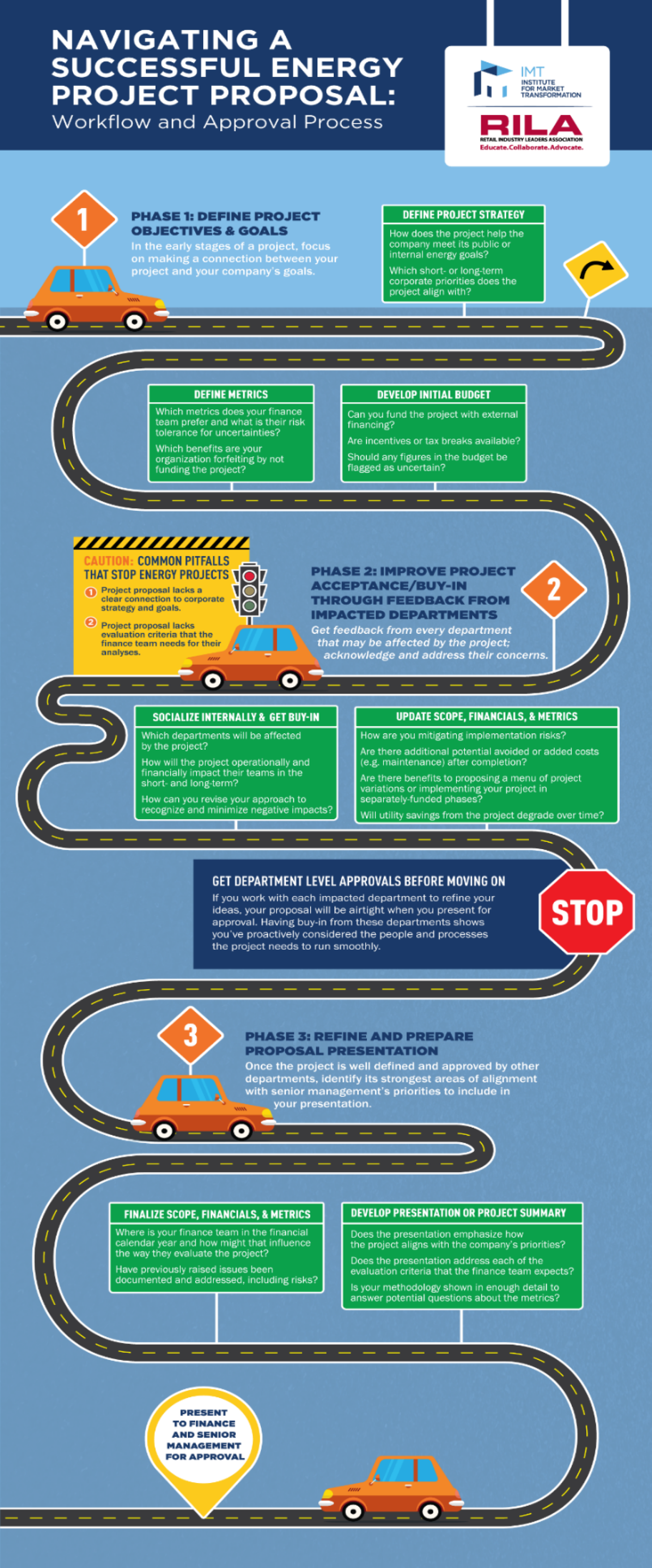There are a variety of challenges that energy projects face in the path to implementation, not the least of which is navigating the approvals process.
February 7, 2018There are a variety of challenges that energy projects face in the path to implementation, not the least of which is navigating the approvals process during which proposals are made and budgets are awarded. This can be especially difficult in the retail sector. To address this market barrier, the Retail Industry Leaders Association (RILA) and the Institute for Market Transformation (IMT) have collaborated to create a Workflow and Approval Guide with support from the Energy Department (DOE).
Given the winding road of obstacles to successfully establishing and implementing portfolio wide energy projects, RILA and IMT have detailed the boxes that must be checked along the way.
Phase 1 – Defining Project Objectives and Goals
Understanding your current corporate landscape is essential to aligning energy goals with existing strategic priorities. Energy projects, if structured properly, can contribute to revenue growth while improving working conditions for employees, and achieving reductions in energy costs.
Click the graphic to learn more.
Phase 2 – Improving Project Acceptance
Collaborative approaches play a significant role in the adoption of any energy-efficiency efforts and can help identify issues that should be addressed ahead of the final proposal to senior leadership. Cross-departmental input can serve as a way to integrate solutions to concerns of programs that will be affected and to minimize implementation risks. Addressing financial aspects within the proposal, such as external financing options, available tax incentives, and budget uncertainty, also decreases the likelihood of outright rejection due to funding.
Phase 3 – Refining the Proposal
The final phase integrates the proactive consideration of risks and benefits, financial components, and alignment with corporate strategic goals into a compelling presentation.
Food Lion, a Better Buildings partner, has put this comprehensive strategy to work and has not only increased support for its dedicated Energy Team and its proposed projects, but it has resulted in a stronger and more engaging relationship with the Finance team, allowing for increased probability of projects receiving funding in the future.


